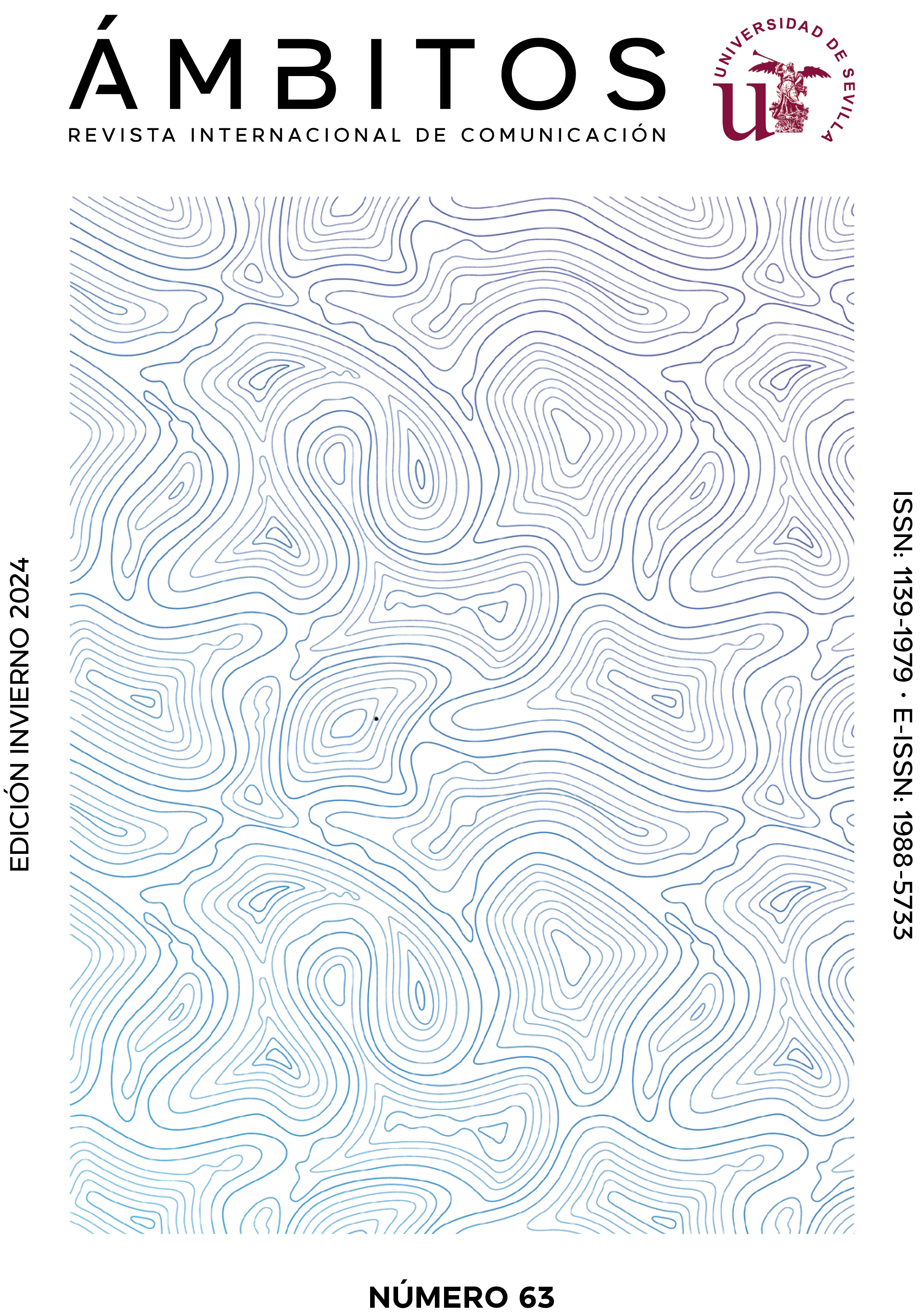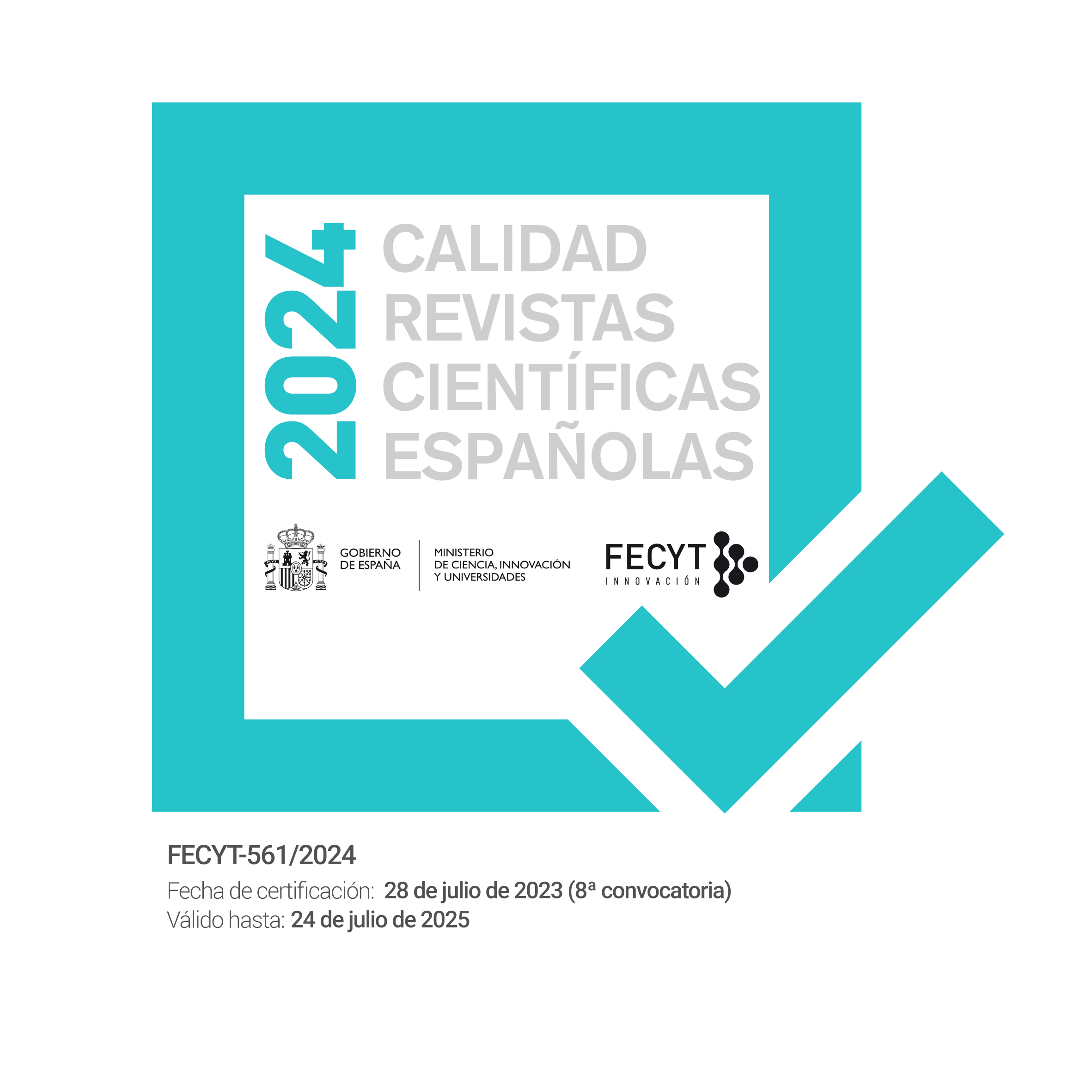Programmatic business formulas for the media: new ways of monetization
DOI:
https://doi.org/10.12795/Ambitos.2024.i63.02Keywords:
communication, journalism, sustainability, monetization, programmatic buyingAbstract
The financial sustainability of the media is the main challenge facing the journalism industry since the emergence of the Internet and the change in the journalistic business model. There is a decisive evolution from a source of income focused on advertising towards diverse formulas of payment models, both in the online version of traditional media and in those that have emerged exclusively digitally. However, the results in the form of income are not as expected, since the media in Spain accumulate one million paying subscribers, below forecasts. The evolution of the audience and types of consumption forces us to innovate on possible alternative means of income and audience loyalty. The research follows a quantitative (statistical) and qualitative methodology (in-depth interviews and grounded theory), in a dynamic of triangulation. The results indicate that the reader seeks alternative mechanisms to access content, and that the media try to respond to this challenge by adapting advertising proposals. It is concluded that the media must promote and take advantage of alternative channels to reach the reader (such as social networks or instant messaging), and explore and exploit direct programmatic advertisements to specific audiences and programmatic purchasing as a new source of financing that complements the already existing ones.
Downloads
References
Aguado, J. M., Feijóo, C., & Martínez, I. J. (2013). La Comunicación Móvil: Hacia un nuevo ecosistema digital. Editorial Gedisa.
Aguado, J. M. (2016). El impacto de los bloqueadores de anuncios en la industria del contenido digital. Telos, (103), 6-9.
AIMC. (2023). Navegantes en la Red. AIMC.
Anderson, C. W., Bell, E., & Shirky, V. (2013). Periodismo posindustrial. Tow Center for Digital Journalism/Columbia Journalism School.
Arano Uría, F. (2021). ¿Redes sociales vs. Medios tradicionales? Disputas y convergencias en la era de la conectividad. Actas de Periodismo y Comunicación Social, 7(1).
Arrese, A. (2013). Algunas reconquistas pendientes del periodismo. Revista de Comunicación, 12(1), 197-219.
Ahlers, D. (2006). News consumption and the new electronic media. The Harvard International Journal of Press/Politics, 11(1), 29–52. https://doi.org/10.1177/1081180X05284317
Barrio Andrés, M. (2022). Modelos de negocio basados en datos, publicidad programática, inteligencia artificial y regulación: Algunas reflexiones. IDP. Revista de Internet, Derecho y Política, (36). Advance online publication. https://doi.org/10.7238/idp.v0i36.401947
Beckert, J. (2023). A threat to journalism? How journalists and advertising sales managers in news organizations perceive and cope with native advertising. Journalism, 24(8), 1733-1751. https://doi.org/10.1177/14648849211067584
Berelson, B. (1952). Content Analysis in Communication Research. The Free Press.
Bodó, B. (2019). Selling news to audiences–a qualitative inquiry into the emerging logics of algorithmic news personalization in European quality news media. Digital Journalism (Abingdon, England), 7(8), 1054-1075. https://doi.org/10.1080/21670811.2019.1624185
Browne, H. (2010). Foundation-funded journalism. Reason to be wary of charitable support. Journalism Studies, 11(6), 889-903. https://doi.org/10.1080/1461670X.2010.501147
Cañedo, A., & Segovia, A. I. (2022). La plataformización de los medios de comunicación de servicio público. Una reflexión desde la economía política de la comunicación. En M. Goyanes Martínez & M. Campos Rueda (Eds.), Gestión de medios públicos en el entorno digital (pp. 65-88). Tirant.
Cárdenas, I., & Roger, S. (2021). Periodismo transmedia: estrategias comunicativas colaborativas para la producción y difusión de contenido de una plataforma digital mexicana. En J. A. Hidalgo Toledo, N. I. Medina Mayagoitia, L. M. Garay Cruz, L. Hinojosa Córdova, L. Navarro Zamora, E. Andión Gamboa, R. Domínguez Cortina, J. Repoll, A. Vega Montiel, & J. Hernández Téllez (Eds.), Investigar la comunicación y las nuevas alfabetizaciones en la era posdigital (pp. 145-174). Ria Editorial.
Carlson, M., & Lewis, S. C. (2019). Temporal reflexivity in journalism studies: Making sense of change in a more timely fashion. Journalism, 20(5), 642-650. https://doi.org/10.1177/1464884918760675
Casas Anguita, J., Repullo Labrador, J., & Donado Campos, J. (2003). La encuesta como técnica de investigación. Elaboración de cuestionarios y tratamiento estadístico de los datos (I). Atencion Primaria, 31(8), 527-538. https://doi.org/10.1016/S0212-6567(03)70728-8
Castells, M. (2012). Comunicación y poder. Siglo XXI Editores.
Catalina-García, B. (2015). Jóvenes y consumo de noticias a través de Internet y los medios sociales. Historia y Comunicación Social, 20(2), 601-619. https://doi.org/10.5209/rev_HICS.2015.v20.n2.51402
Cea-Esteruelas, M. N. (2013). Economía de los cibermedios: Modelo de ingresos y fuentes de financiación. El Profesional de la Información, 22(4), 353-361. https://doi.org/10.3145/epi.2013.jul.12
Chaffey, D., & Smith, P. R. (2017). Digital Marketing Excellence: Planning. Optimizing, and Integrating Online Marketing. Routledge Taylor & Francis Group., https://doi.org/10.4324/9781315640341
Chaffey, D., Edmundson-Bird, D., & Hemphill, T. (2019). Digital business and e-commerce management. Pearson.
Chen, G., Xie, P., Dong, J., & Wang, T. (2019). Understanding programmatic creative: The role of AI. Journal of Advertising, 48(4), 347-355. https://doi.org/10.1080/00913367.2019.1654421
Creswell, J. W. (2009). Research Design: qualitative, quantitative, and mixed methods approaches (3rd ed.). Sage.
Dentsu. (2023). Global Ad Spend Forecasts 2023. Dentsu.
Diamantopoulos, M. (2023). Theorizing “Co-operative Advantage” in News-Markets: Rethinking Media-Ownership, Renewing the Sociology of Journalism’s Radical Tradition, and Reframing Democratic Media Reform. Journalism Studies. https://doi.org/10.1080/1461670X.2023.2167105
Díaz-Noci, J. (2010). Medios de comunicación en internet: Algunas tendencias. El Profesional de la Información, 19(6), 561-567. https://doi.org/10.3145/epi.2010.nov.01
Fares, F. (2018). WhatsApp y Periodismo. Análisis del uso de WhatsApp en los medios de información españoles. Hipertext.net, (16), 78-92. https://doi.org/10.31009/hipertext.net.2018.i16.12
Ferrer-Conill, R., Knudsen, E., Lauerer, C., & Barnoy, A. (2021). The visual boundaries of journalism: Native advertising and the convergence of editorial and commercial content. Digital Journalism (Abingdon, England), 9(7), 929-951. https://doi.org/10.1080/21670811.2020.1836980
Flat 101. (2023). Estudio Anual de Conversión en E-Commerce y Negocios Digitales 2022. Flat 101.
Fondevila-Gascón, J.-F. (2010). El cloud journalism: Un nuevo concepto de producción para el periodismo del siglo XXI. Observatorio (OBS*), 4(1), 19-35.
Fondevila-Gascón, J.-F. (2012). Connected Television: Advantages and Disadvantages of the HbbTV Standard. Cuadernos de Información, (31), 11-20. https://doi.org/10.7764/cdi.31.452
Fondevila-Gascón, J.-F. (2013). Periodismo ciudadano y cloud journalism: Un flujo necesario en la Sociedad de la Banda Ancha. Comunicación y Hombre, (9), 25-41. https://doi.org/10.32466/eufv-cyh.2013.9.163.25-41
Fondevila-Gascón, J.-F. (2014). El uso de hipertexto, multimedia e interactividad en periodismo digital: Propuesta metodológica de ranking de calidad. Zer: Revista de estudios de comunicación= Komunikazio ikasketen aldizkaria, 19(36), 55-76.
Galletero-Campos, B., & López-Cepeda, A. M. (2018). Ayudas directas y publicidad institucional a medios de comunicación en el escenario autonómico: Indicadores y pautas de mejora. El Profesional de la Información, 27(3), 682-691. https://doi.org/10.3145/epi.2018.may.21
Gfk DAM. (2023). Consumo digital en España. Gfk DAM.
Gibbs, G. (2007). Analyzing Qualitative Data. Sage. https://doi.org/10.4135/9781849208574
Glaser, B. G., & Strauss, A. L. (1967). The discovery of grounded theory: Strategies for qualitative research. Aldine de Gruyter.
Gómez, D. R., & Roquet, J. V. (2009). Metodología de la investigación. Universitat Oberta de Catalunya.
Google. (2020). www.thinkwithgoogle.com. Google.
Gordon, B. R., Jerath, K., Katona, Z., Narayanan, S., Shin, J., & Wilbur, K. C. (2021). Inefficiencies in digital advertising markets. Journal of Marketing, 85(1), 7-25. https://doi.org/10.1177/0022242920913236
IAB. (2023). Estudio de Inversión Publicitaria en Medios Digitales. IAB.
Infoadex. (2023). Estudio de la inversión publicitaria en España. Infoadex.
Johnson, G. A. (2023). Inferno: A guide to field experiments in online display advertising. Journal of Economics & Management Strategy, 32(3), 469-490. https://doi.org/10.1111/jems.12513
Kinnear, T. C., & Taylor, J. W. (1989). Investigación de mercados: un enfoque aplicado. McGraw-Hill.
Kostopoulos, C. (2020). Journalism and austerity: Digitization and crisis during the Greek memoranda. Emerald Publishing Limited. https://doi.org/10.1108/9781839094163
Kouki-Block, M., & Wellbrock, C. M. (2022). Influenced by media brands? A conjoint experiment on the effect of media brands on online media planners’ decision-making. Journal of Media Business Studies, 19(1), 29-52. https://doi.org/10.1080/16522354.2021.1899741
Larrinaga, E., Cañizares, M. J., Badia, E., Rusiñol, P., & Baiges, S. (2022). La financiación de los medios de comunicación: un panel de expertos. Editorial DigiDoc.
Lauerer, C. (2019). Advertising and journalism. Oxford University Press., https://doi.org/10.1093/acrefore/9780190228613.013.775
Lee, H., & Cho, C. H. (2020). Digital advertising: Present and future prospects. International Journal of Advertising, 39(3), 332-341. https://doi.org/10.1080/02650487.2019.1642015
Lee, S., Zhang, J., & Wedel, M. (2021). Managing the versioning decision over an app’s lifetime. Journal of Marketing, 85(6), 44-62. https://doi.org/10.1177/00222429211000068
Li, H. (2019). Special section introduction: Artificial intelligence and advertising. Journal of Advertising, 48(4), 333-337. https://doi.org/10.1080/00913367.2019.1654947
López-Cepeda, A. M., López-Golán, M., & Rodríguez-Castro, M. (2019). Participatory audiences in the European public service media: Content production and copyright. Comunicar, 27(60), 93-102. https://doi.org/10.3916/C60-2019-09
Marcos-García, S., Alonso-Muñoz, L., & López-Meri, A. (2021). Periodismo y nuevas narrativas. Storytelling como formato de difusión informativa en redes sociales. Estudios sobre el Mensaje Periodístico, 27(2), 553-567. https://doi.org/10.5209/esmp.71193
Martín García, N., Ortega Fernández, E., & Arranz Rodríguez, I. (2023). La planificación publicitaria de la prensa online: Nativos digitales vs. tradicionales. Estudios sobre el Mensaje Periodístico, 29(1), 143-154. https://doi.org/10.5209/esmp.82662
Martín-Guart, R. (2014). Los retos de la planificación de medios en el entorno digital: Hacia un modelo de eficacia, eficiencia y creatividad dominado por la tecnología. AdComunica, (8), 73-96. https://doi.org/10.6035/2174-0992.2014.8.6
Martín-Guart, R., & Botey-López, J. (2020). Glosario de marketing digital. Editorial UOC.
Martín-Guart, R., & Fernández Cavia, J. (2014). La publicidad y la agencia de medios frente al cambio en el ecosistema mediático. Cuadernos.Info, (34), 13-25. https://doi.org/10.7764/cdi.34.572
McChesney, R. (2007). Rich Media Poor Democracy. En R. Negrine & J. Stanyer (Eds.), The Political Communication Reader (pp. 14-17). Routledge.
McGuigan, L. (2019). Automating the audience commodity: The unacknowledged ancestry of programmatic advertising. New Media & Society, 21(11-12), 2366-2385. https://doi.org/10.1177/1461444819846449
Marugán Solís, F., & Martín Critikián, D. (2022). Redes sociales y Generación Z. Doxa Comunicación. Revista Interdisciplinar de Estudios de Comunicación y Ciencias Sociales, (36), 381–399. https://doi.org/10.31921/doxacom.n36a1707
Marzal-Felici, J., López-Olano, C., & Soler-Campillo, M. (2021). Participación ciudadana y medios de comunicación públicos 1. Conceptos y teorías. Tirant Humanidades.
Mauri-Rios, M., Ramon-Vegas, X., Rodríguez-Martínez, R., & Díaz-Campo, J. (2022). Indicadores para evaluar la rendición de cuentas en los medios de comunicación. Cuadernos.Info, (51), 1-27. https://doi.org/10.7764/cdi.51.27331
Medina-Laverón, M., Sánchez-Tabernero, A., & Breiner, J. (2021). Some viable models for digital public-interest journalism. El Profesional de la Información, 30(1). https://doi.org/10.3145/epi.2021.ene.18
Mills, A. J., Pitt, C., & Ferguson, S. L. (2019). The relationship between fake news and advertising: Brand management in the era of programmatic advertising and prolific falsehood. Journal of Advertising Research, 59(1), 3-8. https://doi.org/10.2501/JAR-2019-007
Noble, H., & Mitchell, G. (2016). What is grounded theory? Evidence-Based Nursing, 19(2), 34-35. https://doi.org/10.1136/eb-2016-102306
Núñez-Barriopedro, E., Cuesta-Valiño, P., & Mansori-Amar, S. (2023). The role of perceived usefulness and annoyance on programmatic advertising: The moderating effect of Internet user privacy and cookies. Corporate Communications, 28(2), 311-324. https://doi.org/10.1108/CCIJ-03-2022-0033
O’Brien, D., Wellbrock, C. M., & Kleer, N. (2020). Content for free? Drivers of past payment, paying intent and willingness to pay for digital journalism–A systematic literature review. Digital Journalism (Abingdon, England), 8(5), 643-672. https://doi.org/10.1080/21670811.2020.1770112
Observatorio de la Publicidad. (2022). Observatorio de la Publicidad en España. La comunicación comercial en cambio permanente. Observatorio de la Publicidad.
Omidi, A., Dal Zotto, C., & Picard, R. G. (2022). The nature of work in the media industries: A literature review and future directions. Journalism and Media, 3(1), 157-181. https://doi.org/10.3390/journalmedia3010013
Ortega, E., Arranz, I., & Martín, N. (2023). Precio de la publicidad en los medios: Análisis de la evolución de los precios de compra de espacios publicitarios y condicionantes de negociación en España. Palabra Clave, 26(3), e2338. https://doi.org/10.5294/pacla.2023.23.3.8
Olsen, R. K., Kalsnes, B., & Barland, J. (2021). Do small streams make a big river? Detailing the diversification of revenue streams in newspapers’ transition to digital journalism businesses. Digital Journalism, 1-22. https://doi.org/10.1080/21670811.2021.1973905
Papí Gálvez, N. (2014). Los medios online y la ¿crisis? de la planificación de medios publicitarios. AdComunica, (7), 29-48. https://doi.org/10.6035/2174-0992.2014.7.3
Papí-Gálvez, N. (2015). Nuevos medios y empresas innovadoras. El caso de las agencias de medios. El Profesional de la Información, 24(3), 301–309. https://doi.org/10.3145/epi.2015.may.10
Papí-Gálvez, N., & Perlado-Lamo-de-Espinosa, M. (2018). Investigación de audiencias en las sociedades digitales: Su medición desde la publicidad. El Profesional de la Información, 27(2), 383–393. https://doi.org/10.3145/epi.2018.mar.17
Pérez-Latre, F. J., & Sánchez-Tabernero, A. (2003). Leadership, an essential requirement for effecting change in media companies: An analysis of the Spanish market. International Journal on Media Management, 5(3), 199–208. https://doi.org/10.1080/14241270309390035
Pérez-Latre, F. J. (2015). La publicidad y los medios: ensayos de introducción a la publicidad. EUNSA.
Picard, R. G. (2003). Cash cows or entrecote: Publishing companies and disruptive technologies. TIC. Trends in Communication, 11(2), 127–136. https://doi.org/10.1207/S15427439TC1102_04
Picard, R. G. (2006). Historical trends and patterns in media economics. En A. Albarran, B. Mierzejewska, & J. Jung (Eds.), Handbook of media management and economics (pp. 23-36). Lawrence Erlbaum Associates.
Picard, R. G. (2011). The economics and financing of media companies. Fordham University Press.
Picard, R. G. (2020). Media and communications policy making. Springer International Publishing. https://doi.org/10.1007/978-3-030-35173-1
Price, J. (2020). How to feed the Ferret: Understanding subscribers in the search for a sustainable model of investigative journalism. Journalism, 21(9), 1320-1337. https://doi.org/10.1177/1464884917733587
Reuters Institute. (2021). Digital News Report. Reuters.
Rios-Rodríguez, R., Fernández-López, S., Dios-Vicente, A., & Rodeiro-Pazos, D. (2022). Digital opportunities for local journalism: A panel data analysis on the economic performance of online-only vs print newspapers. Digital Journalism, 1-20. https://doi.org/10.1080/21670811.2022.2103009
Rubio Romero, J., & Perlado Lamo de Espinosa, M. (2015). El fenómeno WhatsApp en el contexto de la comunicación personal: Una aproximación a través de los jóvenes universitarios. Icono 14, 13(2), 73-94. https://doi.org/10.7195/ri14.v13i2.818
Samuel, A., White, G. R., Thomas, R., & Jones, P. (2021). Programmatic advertising: An exegesis of consumer concerns. Computers in Human Behavior, 116, 106657. https://doi.org/10.1016/j.chb.2020.106657
Sánchez-Blanco, C., Sádaba, C., & Sanjurjo-Sanmartín, E. L. (2020). Mecanismos comportamentales como predicción del uso de ad blocking en usuarios de noticias online. Revista de Comunicación, 19(2), 231–243. https://doi.org/10.26441/RC19.2-2020-A13
Sangil, L., Campos-Freire, F., & Pérez-Latre, F. (2023). Monetization of digital newspapers: Experimentation with brand extension and buying influence. El Profesional de la Información, 32(1). https://doi.org/10.3145/epi.2023.ene.15
Scolari, C. A. (2008). Hipermediaciones: elementos para una teoría de la comunicación digital interactiva. Editorial Gedisa.
Scolari, C. A., & Piñón, J. (2016). Las narrativas transmedia en el mercado audiovisual latino de Estados Unidos. Actores, contenidos y estrategias. Comunicación y Sociedad, (27), 13–52. https://doi.org/10.32870/cys.v0i27.4335
Serazio, M. (2020). Making (branded) news: The corporate co-optation of online journalism production. Journalism Practice, 14(6), 679–696. https://doi.org/10.1080/17512786.2019.1637273
Shaw, I. (2003). La evaluación cualitativa. Introducción a los métodos cualitativos. Paidós.
Silverman, D. (2006). Interpreting Qualitative Data. Sage.
Srnicek, N. (2018). Capitalismo de plataformas. Caja Negra Editora.
Towse, R., & Hernández, T. N. (Eds.) (2020). Handbook of cultural economics. Edward Elgar Publishing.
van der Wurff, R., Bakker, P., & Picard, R. G. (2008). Economic growth and advertising expenditures in different media in different countries. Journal of Media Economics, 21(1), 28–52. https://doi.org/10.1080/08997760701806827
Villi, M., & Picard, R. G. (2019). Transformation and innovation of media business models. En M. Prenger & M. Deuze (Eds.), Making Media: Production, Practices, and Professions (pp. 121–132). Amsterdam University Press., https://doi.org/10.2307/j.ctvcj305r.11
Wielki, J. (2020). Analysis of the role of digital influencers and their impact on the functioning of the contemporary on-line promotional system and its sustainable development. Sustainability, 12(17), 7138. https://doi.org/10.3390/su12177138
Wimmer, R., Dader, J., & Dominick, J. (1996). La investigación científica de los medios de comunicación: una introducción a sus métodos. Bosch.
Zhang, J., & Wedel, M. (2009). The effectiveness of customized promotions in online and offline stores. JMR, Journal of Marketing Research, 46(2), 190–206. https://doi.org/10.1509/jmkr.46.2.190
Downloads
Published
How to Cite
Issue
Section
License
Copyright (c) 2024 Joan-Francesc Fondevila-Gascón, Ramon Martín-Guart, Joan Cuenca-Fontbona, Óscar Gutiérrez-Aragón

This work is licensed under a Creative Commons Attribution-NonCommercial-ShareAlike 4.0 International License.
Ámbitos. Revista Internacional de Comunicación is an open access journal, which means that all content is freely available at no charge to the user or their institution. Users may read, download, copy, distribute, distribute, print, search or link to the full text of articles, or use them for any other lawful purpose, without seeking prior permission from the publisher or author. This definition of open access is in accordance with the Budapest Open Access Initiative (BOAI).

Unless otherwise noted, all content in the electronic edition is distributed under a "Creative Commons Attribution-NonCommercial-ShareAlike 4.0 International License". You can consult the informative version and legal text of the licence here. This should be expressly stated in this way where necessary.
In case of acceptance of the manuscript, the authors cede the rights of the work for its publication to Ámbitos. Revista Internacional de Comunicación under the Attribution-NonCommercial-ShareAlike 4.0 International license contract (CC BY-NC-SA 4.0). The authors retain copyright and third parties are authorised to copy, distribute and make use of the work, provided they comply with the terms and conditions set out in the licence
- Cite the authorship and the original source of publication (journal, publisher and URL of the work).
- Do not use them for commercial purposes.
- If you remix, transform or create from the material, you must release your contributions under the same license as the original.
More information can be found at https://creativecommons.org/licenses/by-nc-sa/4.0/deed.es


















